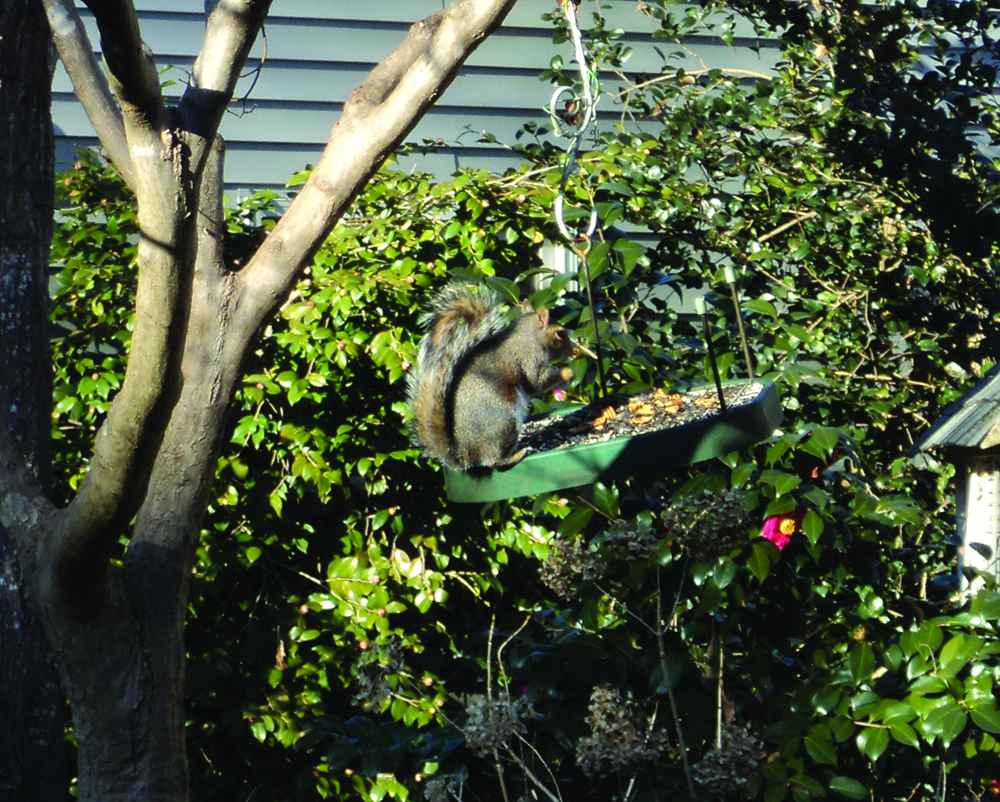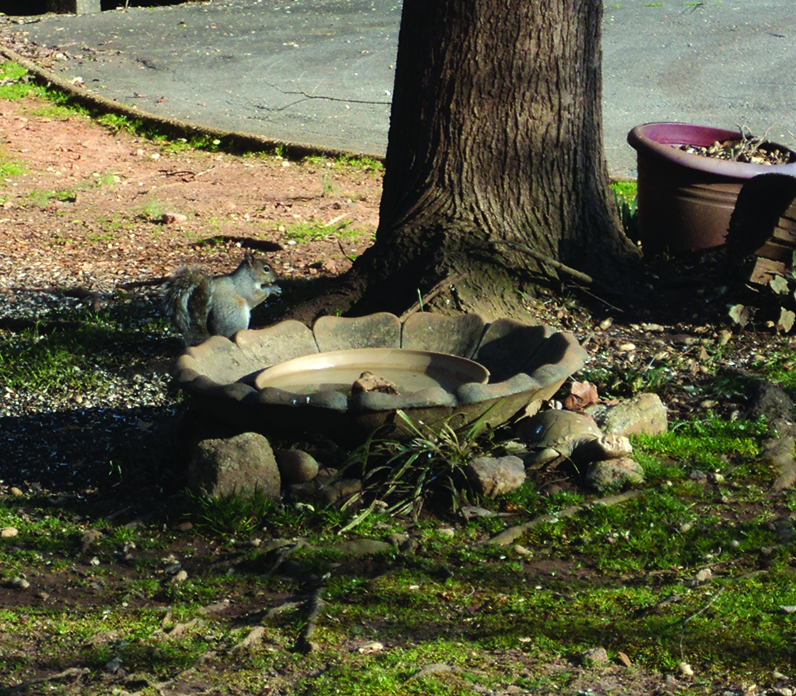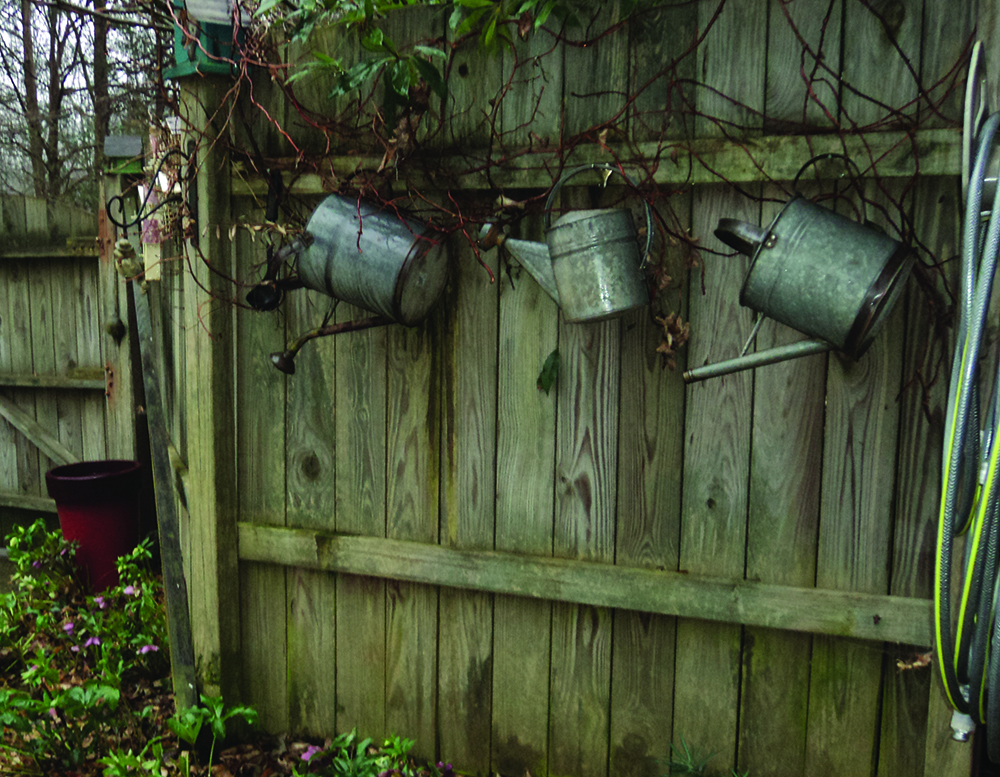It was a warm, sunny afternoon on this particular day in June when I had my first encounter with ´Broken Tail´. I had just finished another busy day in the garden and was feeling pretty good about my accomplishments. Since I was still in a state of euphoria, I was not quite prepared for what happened next. Figuring there was enough time to water a few flowerpots before retreating to the kitchen to prepare our evening meal, I made my way to the watering cans hanging on our fence. As luck would have it or not, I chose the wrong one. Apparently, ´Broken Tail´ had decided to make a nest in that very one and was sound asleep inside. We were both rather startled, but he was more so, and that old saying ¨acting squirrelly¨ is true, he went nuts! He jumped out, landed on my face, ran across the top of my head and down my back making his way to the nearby gate. There he sat staring at me and screaming like squirrels do ¨kuk, kuk, kuk, quaa¨. I have to admit, I screamed a little, too!

Now ´Broken Tail´ is an Eastern Gray Squirrel (Sciurus carolinensis), also known as the grey squirrel depending on your region, is a tree squirrel native to eastern North America. He is diurnal opposite of nocturnal and is active chiefly in the early mornings and late afternoons… resting and sleeping in the middle of the day and night. Like all gray squirrels, males and females are similar in size and color…growing up to 20 inches long and weighing up to 1.5 pounds. The fur on their back is usually dark to pale gray and may have red tones with their ears, tails, and underpart pale gray to white. The average life expectancy of an adult is 6 years with a maximum life span of 12 years in the wild.
I´m not really sure if ´Broken Tail´ is a male or female but in my garden journal, I noted him as a male. He has given up the watering can since our first encounter and hangs out in our trees or upside down on our bird feeders along with other squirrels foraging on the seeds and nuts including tree roots, bark, buds, and flowers all to be eaten or stored for winter. They are very intelligent with a strong sense of smell for finding their buried food. Unfortunately, with squirrels there is a yin and yang. The yin is their eating habits that can destroy our bird feeders, lawns, plants, and trees making them a real nuisance to homeowners and forests. Yet, the yang is they are considered the most prodigious and ecologically essential forest regenerators…you decide! Water is essential to squirrels needing to drink at least twice a day. (Garden hint: All my bird baths have a heavy duty plant saucer placed inside during the winter to preserve the concrete. On cold nights the water freezes and by morning I’m able to dump the ice and add fresh water.)
Squirrels are extremely territorial and will fight to their death to protect their area. It is not unusual for them to have ears and tails bitten off like ´Broken Tail´. Mother squirrels are the most vicious when defending their babies. Females breed twice a year, spring and fall. Once they mate, they go their separate ways with the females raising the young in their nest (drey) made of leafy twigs. The babies are born hairless and blind and are completely dependent on the mothers for about 28 to 35 days before they open their eyes. They begin to leave the nest at 42 days, but the mothers don’t wean them until they reach 56 to 70 days old when they finally go out on their own reaching adult size at 9 months.
They are well known as being probably the most acrobatic mammals running up to 20 mph, climbing walls and trees, leaping 6 feet or more from tree to tree and can survive 100-foot falls or higher with no injuries…their bushy tails serve as a parachute to ease the fall. We may consider them the clowns of the trees but don’t want them in our gardens. With their keen sense of smell and taste, using old coffee grounds, moth balls, garlic, peppermint spray, cider vinegar and dryer sheets will help keep them away. Even aluminum foil in your flowerpots will keep them from digging. A sprinkling of cayenne pepper in your bird feeders seems to work and the birds do not taste the pepper. But before you chase them away, take a look at their tails. They say a tough winter is ahead if the squirrels´ tails are very bushy!
So, for now, no more close encounters for ´Broken Tail´ and me. He knows his name and hangs nearby in his favorite tree waiting for a few extra peanuts at the base of the tree. Yes, he is one spoiled, gray squirrel…that’s just the way it is! ■



